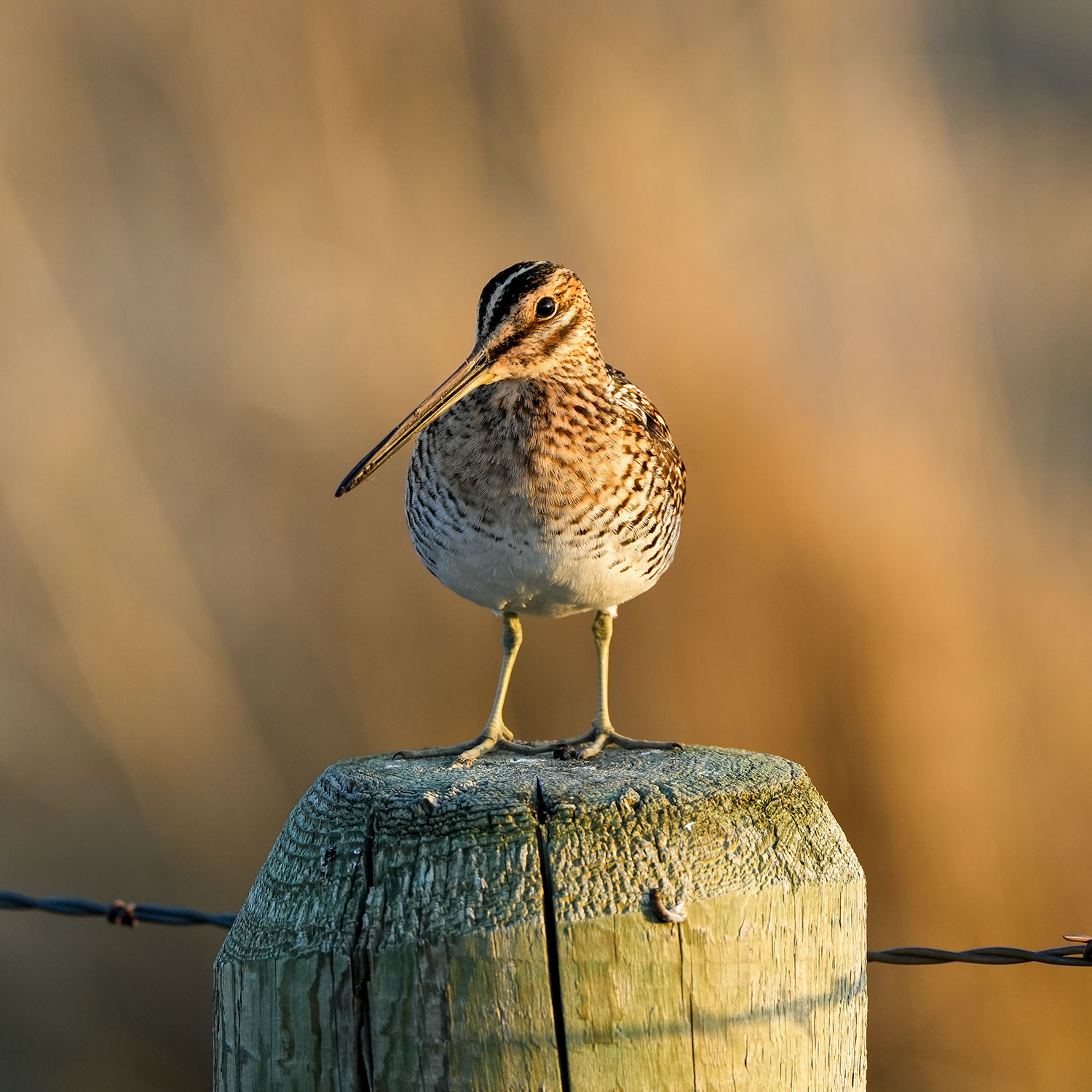I’m standing in native mixed-grass prairie with my head tilted back like a child trying to catch snowflakes.
I’m not playing, though, but looking for the composer of what scientists describe as a haunting, hu-hu-hu winnowing sound. As difficult as it is to spot the highflying bird, it’s even harder to remember the bird’s name, despite being reminded most springs by the very person who is just feet away scanning the sky with binoculars.
Wilson’s snipe, she says.
Duh, I mumble.
What I do remember is the winnowing sound is made by air rushing over the snipe’s outspread tail feathers as males dive to defend territories and attract mates.
The chunk of prairie we’re occupying this spring morning shoulders up against The Nature Conservancy’s 7,000-plus acre Davis Ranch, which is dubbed as one of the largest prairie landscapes in the Missouri Coteau. It’s big, drop-dead gorgeous country that begs to be explored if you had the time.
In the other direction, through a gate and over the hill via a decent two-track, researchers are trying to trap Western meadowlarks (a bird name I don’t have to be reminded of) in mist nets. They trapped one earlier this morning and are aiming for a second, but I’m in no hurry now that I’ve found a boulder to sit on and watch the action from a distance.
After decades of writing about stuff in the outdoors, many of the tagalongs that quickly jump to mind are those involving skilled scientists poking their noses into the lives of cool critters. I’ve always found it hard not to live vicariously through these folks when I’m around them, wondering what it would be like to be them, to do what they do, go where they go and see what they see.
Sometime in the late 1990s, I spent a summer day trailing a young biologist in the North Unit of Theodore Roosevelt National Park as he wandered the rugged up and down looking for bighorn sheep released into the park in winter. We spent much of the day hiking and glassing likely hideouts, eating lunch out of our backpacks in pretty country and talking. I asked him if he’d bumped into any rattlesnakes, not knowing the answer would be 22, including the one that bit him on his hand earlier that summer a mile from his vehicle and several miles from Watford City where he was eventually treated by medical staff. And his obvious answer to my obvious question was, yes, it hurt.
Where we fish in Montana in summer, we see the random bear. Most of them are black bears, but there’s the occasional grizzly, including a young one that ran through camp as we were unloading gear. I bring this up because when I hear something crashing around in the woods on a stretch of river that I believe to have to myself, my thoughts immediately land on something big and hairy in the bushes.
Last summer, big and hairy turned out to be four researchers noisily bushwacking through the riverside underbrush looking for signs of a particular duck that spends the bulk of its life in salt water but is said to inhabit swift-moving streams during nesting season and summer.
Dressed in chest waders, and loaded down with heavy backpacks and tools, the most talkative of the four said they were researching harlequin ducks, a colorful and a seemingly wildly out-of-place bird in these parts that I was familiar with thanks to field guides and nature TV.
While we briefly visited about the weather, the beauty of the forest and the river that runs through their summer “office,” I got the feeling their search for signs of harlequins nesting in the thick streamside vegetation was slow going at best.
I wished them luck in parting, not adding that I’ve fished this stretch of river for 14 summers running and have yet to lay eyes on a harlequin. Yet, in all fairness, I spend little time as possible hacking around the underbrush because that’s not where the trout live, so who knows what I’ve missed.


